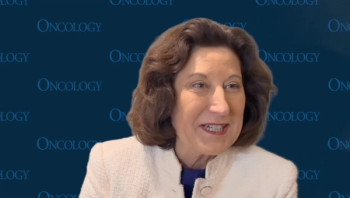
Osteoporosis Therapy in Breast Cancer Associated With Better Outcomes
Oral osteoporosis therapy was associated with improvements in event-free survival and distant disease-free survival in post-menopausal women with breast cancer receiving adjuvant aromatase inhibitor therapy.
Oral osteoporosis therapy was associated with improvements in event-free survival (EFS) and distant disease-free survival (DDFS) in postmenopausal women with breast cancer receiving adjuvant aromatase inhibitor therapy, according to a new analysis of the MA.27 trial.
“Bisphosphonates reduce skeletal complications from established bone metastases and prevent the recurrence of early breast cancer,” wrote study authors led by Allan Lipton, MD, of the Penn State Hershey Cancer Institute in Hershey, Pennsylvania. “However, bisphosphonates may increase the risk of visceral metastasis in perimenopausal females.”
The new study was an analysis of 7,576 postmenopausal women with breast cancer treated with either exemestane or nonsteroidal anastrozole. Osteoporosis was reported at baseline in 654 women (8.6%), and a total of 1,294 women (17%) had osteoporosis at some point during the study; oral osteoporosis therapy was taken by 815 women (10.8%) at baseline and by 2,711 women in total (36%). Results of the analysis were
Among the full cohort, 693 women had EFS events (9.15%) and 321 women (4.2%) had DDFS events. On a univariate analysis, women who took osteoporosis therapy regardless of whether osteoporosis was present had better EFS than those who did not, with a hazard ratio (HR) of 0.70 (95% CI, 0.59–0.83; P < .001). The absolute 5-year rate of EFS improvement with osteoporosis therapy was 4%.
A similar result was seen for DDFS. Those who received osteoporosis therapy had an HR for DDFS of 0.52 (95% CI, 0.26–1.06), and the 5-year improvement was 2%.
A multivariate analysis showed that initiating osteoporosis therapy more than 30 days before relapse yielded better EFS, with an HR of 0.67 (95% CI, 0.57–0.80; P < .001). The same was true with DDFS, with an HR of 0.57 (95% CI, 0.44–0.73; P < .001). The length of osteoporosis therapy was significantly associated with both EFS and DDFS as well.
“This study provides no contraindication to the use of oral osteoporosis therapy in women with localized breast cancer. Osteoporosis therapy was not associated with an alteration in visceral-only metastasis here,” the authors concluded. “This study adds to the growing body of literature concerning the benefits of adjuvant bisphosphonate therapy.” They added that a prospective trial assessing oral bisphosphonate therapy in this setting is still needed.
Newsletter
Stay up to date on recent advances in the multidisciplinary approach to cancer.














































































